Boulevard de Sabana Grande [ESP/ENG]
En tiempos de la colonia 1743 la calle real de Sabana Grande servía para conectar la ciudad de Caracas con las haciendas y poblados rurales al este. Estas haciendas y poblados fueron elevados a parroquia en 1852 para formar parte de la ciudad capital. Ya en 1881 existía la tercera línea del tranvía ruta la campiña-sabana grande, y para 1912 comenzaron a transitar los primeros vehículos, al crearse una línea de transporte desde la plaza bolívar a petare, Con el devenir de los años esos caseríos y haciendas se transformaron en urbanizaciones y en 1951 se construyó sobre la calle real la Av. Abraham Lincoln que dio paso en 1975 junto con las obras del metro de Caracas al bulevar de Sabana Grande culminado en 1981.
Descendimos en la estación Chacaíto, y al caminar hacia una de sus salidas, llamó poderosamente nuestra atención una obra del maestro Jesús Soto llamada Progresión Amarilla (1982), la cual invita al curioso a acercarse a ella solo para descubrir que sobre ese espacio abierto y ya en pleno bulevar, pende otra obra llamada Cubo Virtual Azul y Negro; ambas se fusionan en perfecta armonía.
Con una longitud de doce cuadras (1.8 kms.) y coronado a ambos extremos por la plaza Brión de Chacaíto y la Plaza Venezuela, todo él está repleto de obras de artes a lo largo de su recorrido, entre las que observan, piezas de Jesús Soto, Lía Bermúdez, Víctor Gil, Teresa Casanova etc. De igual manera tanto en el bulevar como en Sabana Grande abundan obras arquitectónicas como: la Torre la Previsora, la Torre Phelps, la Torre Capriles, la Torre Polar, la Torre Centrum, el Edf. del antiguo cine Radio City, el Teatro Brodway, el Teatro del Este, las sedes principales de varios bancos, el Centro Comercial Chacaíto, el Centro Comercial City Market (punto de referencia de la electrónica en la ciudad), el Centro Comercial el Recreo, el hotel Meliá Caracas, el pasaje la Asunción (mejor conocido como callejón de la puñalada, sitio predilectos de artesanos callejeros), el pasaje Galerías Bolívar, tres estaciones del metro entre muchas otras.
Datos curiosos: en 1946 y luego de fugarse de una cárcel de la Guyana Francesa en un costal de cocos, llega a Venezuela el francés Henri Charriére, quien compró la quinta cristal y fundo en ella “Le Grand Café”, con cincuenta mesas y de ambiente claramente parisino, allí escribió su novela “Papillón”, futuro best seller donde relata su vida y la fuga de la cárcel, la misma fue llevada a la gran pantalla con el nombre homónimo y protagonizada por Steve McQueen y Dustin Hoffman. En los 50, “Le Grand Café” era regularmente visitado por poetas, escritores, artistas, políticos e intelectuales de un grupo conocido como “La República del Este”. Gabriel García Márquez, Julio Cortázar, Miguel Otero Silva, Carlos Fuentes, Renny Ottolina, Francisco Massiani, Chritian Dior, Salvador Garmendia, José Ignacio Cabrujas, Pascual Navarro, Mateo Manaure, Marcos Pérez Jiménez, Juan Domingo Perón entre otros, mantenían allí largas tertulias. En un día servían más de tres mil tazas de café. En el edificio Gran Sabana se encuentra la sede del Museo Ornitológico William Phelps (el más importante de américa latina y la colección privada más grande del mundo). En una calle discreta hay un local sin nombre que está la gran pulpería del libro venezolano, un sótano con túneles y túneles repletos de libros nuevos y usados más de dos millones, sueño de Rafael Ramón Castellanos un periodista, doctor en filosofía y letras, con más de 70 títulos publicados y todavía escribe en algún rincón del recinto, que frecuenta cada vez menos ya que a sus 86 años es más el tiempo que pasa en casa que en su amado local. Por sus pasillos han paseado intelectuales de la talla de Vargas Llosa y Gabriel García Márquez. En el año 1953 llegó a Venezuela junto a su marido la madame Jenie Soep Bamberger, empresaria en el negocio de la prostitución. Madame Jenie montó dos locales y una galería de arte, vivía en el Edf. Los Andes y desde allí dirigía una red internacional de prostitución. A la fecha la zona de Sabana Grande ha estado plagada de locales de todas las categorías dedicados a ese negocio. Sabana Grande fue testigo de la primera marcha del orgullo gay en el país en el año 1997 y siempre ha sido la zona predilecta de la comunidad LGBT. En las décadas de los setenta, ochenta y noventa La mafia siciliana y específicamente la familia Cuntrera también operó en sabana grande, traficaba con la heroína asiática traída desde el triángulo dorado -Birmania, Laos y Tailandia - hacia los mercados europeo y norteamericano, atravesando toda Asia y el Medio Oriente, hasta Francia, Alemania, Inglaterra y la propia Italia. Con la fachada de empresas legalmente constituidas en el país. La escritora Clarisse Sterling escribió en el libro ”Octopus” sobre las estructuras de todas las mafias italianas, en especial la Cosa Nostra y su Capítulo Venezolano. Citar todas las curiosidades y detalles de Sabana Grande y su bulevar nos tomaría muchas líneas que no por poco interés sino por la extensión del artículo es preferible parar.
Próxima parada Plaza Venezuela y sus alrededores, pero esa, esa es otra historia…
In 1743 colonial times calle real de Sabana Grande served to connect the city of Caracas with farms and rural towns to the East. These farms and towns were elevated to parish in 1852 to form part of the capital city. In 1881 the third line of the tram route was the Sabana Grande, and 1912 they began to walk the first vehicles, to create a line of transport from the Bolivar Square to Petare, with the evolution of the years those hamlets and farms were transformed in urbanizations and in 1951 was built on calle real Abraham Lincoln Avenue, who gave way in 1975 along with the works of the Caracas metro to Boulevard de Sabana Grande culminated in 1981.
We descended in Chacaito station, and walk to one of its outlets, called powerfully our attention a work of the master Jesús Soto called yellow progression (1982), which invites the curious to reach out to her only to discover that on that space open and already on the Boulevard, another so-called piece hangs Virtual Cube blue and black; both merge in perfect harmony.
With a length of twelve blocks (1.8 kms.) and crowned at both ends by Brion de Chacaito square and the plaza Venezuela, the whole is filled with works of art along its route, including observed, Jesús Soto, Lía Bermúdez parts , Victor Gil, Teresa Casanova etc. Similarly in the Boulevard both as architectural masterpieces abound in Sabana Grande as: the Previsora Tower, Tower Phelps, the Tower Capriles, Polar Tower, Tower Centrum, Edf. the old cinema Radio City, the Broadway Theatre, East Theatre, the main headquarters of several banks, Chacaito shopping center, the Center commercial City Market (point of electronics in the city), el Recreo shopping mall, the Melia hotel Caracas, the assumption passage (better known as Callejón de la puñalada site favorite Street artisans), the passage galleries Bolivar, three among many other metro stations.
Curious facts: In 1946 and after escaping from a French Guiana prison in a sack of coconuts, French Henri Charriére arrives in Venezuela, who bought the fifth Crystal and founded in it "Le Grand Café", with fifty tables and clearly Parisian atmosphere , there he wrote his novel "Papillon", future bestseller where he recounts his life and the escape of the prison, it was taken to the big screen with the name homonym and starring Steve McQueen and Dustin Hoffman. In the 50, "Le Grand Café" was regularly visited by poets, writers, artists, politicians and intellectuals of a group known as "The Republic of the East". Gabriel García Márquez, Julio Cortázar, Miguel Otero Silva, Carlos Fuentes, Renny Ottolina, Francisco Massiani, Chritian Dior, Salvador Garmendia, José Ignacio Brujas, Pascual Navarro, Mateo Manaure, Marcos Pérez Jiménez, Juan Domingo Perón among others, They kept long gatherings there. In one day they served more than three thousand cups of coffee. In the Gran Sabana building is the headquarters of the Ornithological Museum William Phelps (the most important in Latin America and the largest private collection in the world). In a discreet street there is an unnamed place that is the great Pulpería of the Venezuelan book, a basement with tunnels and tunnels full of new books and used more than two million, dream of Rafael Ramón Castellanos a journalist, doctor in philosophy and letters, with more than 70 titles Those published and still writes in some corner of the enclosure, which frequents less and more since at its 86 years is more the time spent at home than in his beloved local. Through its corridors have walked intellectuals of the stature of Vargas Llosa and Gabriel García Márquez. In the year 1953 came to Venezuela with her husband Madame Jenie Soep Bamberger, businesswoman in the business of prostitution. Madame Jenie rode two premises and an art gallery, lived in the Edf. The Andes and from there led an international network of prostitution. To date the area of Sabana Grande has been plagued with premises of all categories dedicated to this business. Sabana Grande witnessed the first gay pride march in the country in the year 1997 and has always been the favorite area of the LGBT community. In the 1970s, 1980s and 1990s the Sicilian Mafia and specifically the Cuntrera family also operated in Sabana Grande, dealing with Asian heroine brought from the Golden Triangle-Burma, Laos and Thailand-towards the European markets and North American, across Asia and the Middle East, to France, Germany, England and Italy itself. With the facade of legally constituted companies in the country. Writer Clarisse Sterling wrote in the book "Octopus" on the structures of all Italian mafias, especially the Cosa Nostra and its Venezuelan chapter. Quoting all the curiosities and details of Sabana Grande and its boulevard would take us many lines that not for little interest but for the extension of the article is preferable to stop.
Next stop Plaza Venezuela and its surroundings, but that, that's another story...
Les dejo una muestra musical de dos de las canciones más sonadas (anglo y latina) para 1982.
I give you a sample of the music of two of the songs most played (anglo and Latin) for 1982.Michael Jackson - Billie Jean
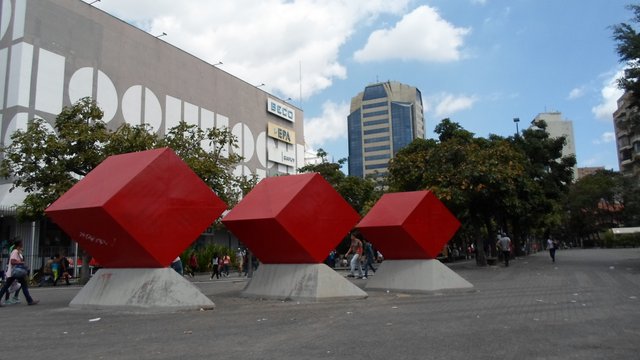
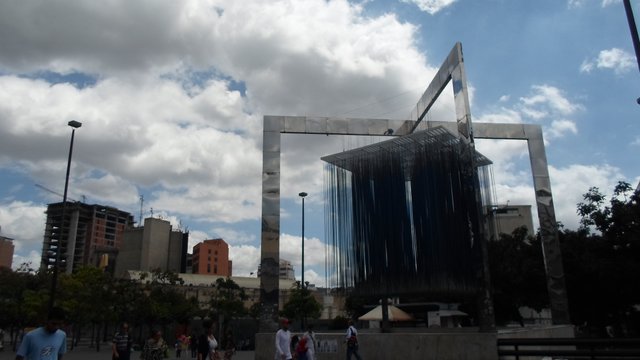
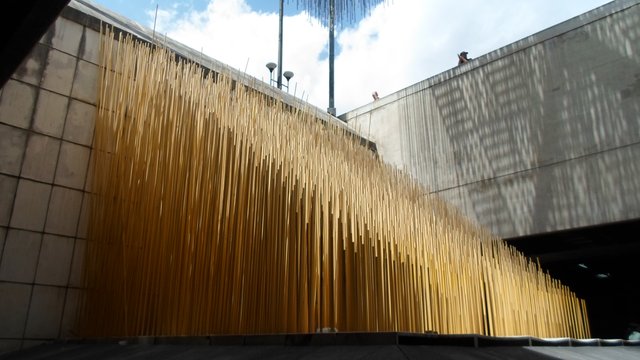
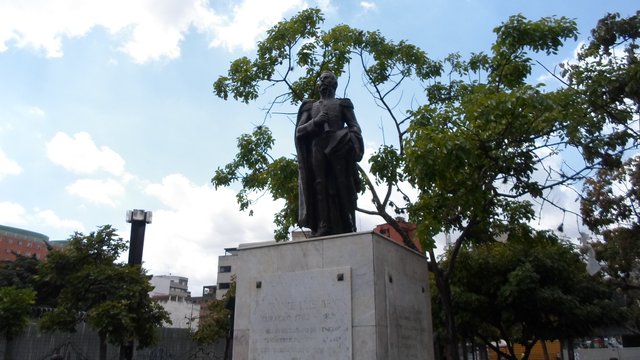
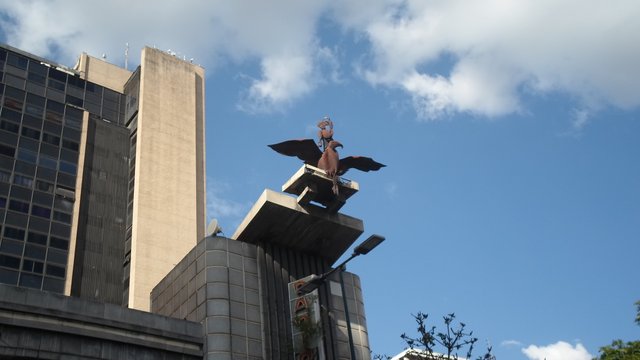
Congratulations @luisjls! You have completed the following achievement on the Steem blockchain and have been rewarded with new badge(s) :
Click on the badge to view your Board of Honor.
If you no longer want to receive notifications, reply to this comment with the word
STOP